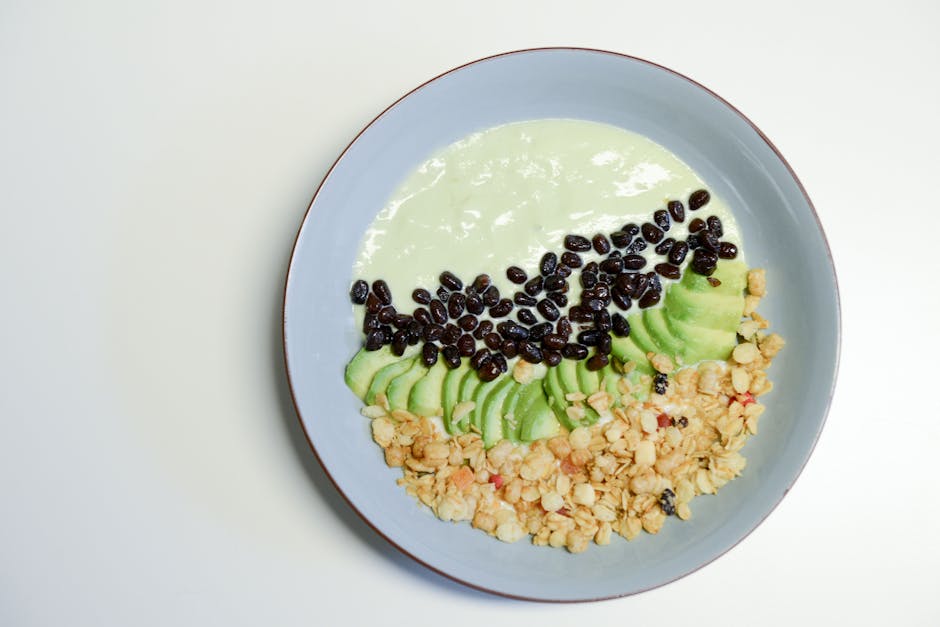Incorporating Superfoods into Your Meals Easily
Superfoods are a term often thrown around in health and wellness discussions, but their significance extends beyond mere trends. These nutrient-dense foods pack a powerful punch when it comes to boosting overall health and preventing chronic diseases. From chia seeds to kale, incorporating these superfoods into daily meals can seem daunting at first, but it doesn’t have to be. The key lies in understanding how to seamlessly integrate them into your diet without overhauling your routine or breaking the bank.
Understanding Superfoods and Their Benefits
The term “superfood” is not a scientific classification but rather a marketing term used to describe foods that are exceptionally rich in nutrients. These nutrients can include vitamins, minerals, antioxidants, and healthy fats that support various bodily functions. For instance, blueberries are known for their high antioxidant content, which helps combat oxidative stress in the body.
One major benefit of superfoods is their ability to enhance energy levels naturally. Unlike quick fixes like caffeine or sugar, foods such as quinoa or avocado provide sustained energy through complex carbohydrates and healthy fats. The inclusion of superfoods in your diet can lead to long-term health benefits like reduced risk of heart disease, improved gut health, and even better mental clarity.
While the benefits are clear, some skepticism surrounds the term because no single food can provide all essential nutrients. This highlights the importance of consuming a variety of superfoods as part of a balanced diet rather than relying on one or two miracle ingredients.
Simple Ways to Add Superfoods to Everyday Meals
Incorporating superfoods into meals doesn’t require advanced cooking skills or exotic ingredients. A great starting point is integrating them into dishes you already prepare. For example:
- Add a handful of spinach or kale to your morning smoothie for an easy nutrient boost.
- Sprinkle chia seeds or flaxseeds over yogurt or oatmeal to add fiber and omega-3 fatty acids.
- Replace white rice with quinoa or farro in your meals for added protein and minerals.
Another strategy is to experiment with superfood substitutes in your recipes. Swap out regular flour for almond flour in baked goods or use avocado instead of butter as a healthier fat source. If you enjoy snacking, consider keeping dried goji berries or dark chocolate with high cocoa content on hand for guilt-free indulgence.
Planning ahead can make it even easier. Preparing superfood-packed meal components like roasted sweet potatoes or pre-chopped vegetables can save time during busy weekdays while ensuring that nutritious options are always within reach.

The Role of Seasonal and Local Superfoods
One aspect often overlooked is the value of seasonal and locally available superfoods. These options are usually fresher, more affordable, and environmentally friendly compared to imported alternatives. For example, during fall, pumpkins and squash provide an excellent source of beta-carotene and fiber. In summer, berries like strawberries and raspberries become abundant and are perfect for adding natural sweetness to dishes.
Local farmers' markets are an excellent resource for discovering seasonal superfoods that might not be widely available at supermarkets. You’ll often find varieties specific to your region that are just as nutrient-rich as globally popular options like kale or quinoa.
Additionally, focusing on seasonal produce allows you to rotate different foods throughout the year, ensuring a diverse range of nutrients in your diet. This diversity not only supports physical health but also keeps meals exciting and flavorful.
Debunking Myths About Superfoods
A common misconception is that incorporating superfoods is expensive or requires sourcing rare ingredients from specialty stores. In reality, many cost-effective options exist. Items like lentils, eggs, and frozen spinach are often overlooked despite being rich in essential nutrients. Frozen options, in particular, retain much of their nutritional value while being budget-friendly and convenient.
Another myth is that preparing meals with superfoods takes considerable time. While some recipes may require additional steps (like soaking chia seeds overnight) many ingredients can be consumed raw or minimally processed. For example, slicing an avocado onto whole-grain toast takes no more than a minute but provides healthy fats and fiber.
| Superfood | Key Nutrient | Easy Integration Tip |
|---|---|---|
| Kale | Vitamin K | Add to salads or smoothies |
| Quinoa | Protein & Fiber | Use as a base for grain bowls |
| Chia Seeds | Omega-3 Fatty Acids | Mix into yogurt or oatmeal |
| Berries (e.g., Blueberries) | Antioxidants | Top on cereals or desserts |
| Sweet Potatoes | Beta-Carotene | Bake as fries or mash them |
Lastly, it’s worth addressing the belief that superfoods alone can transform health outcomes. While they are undoubtedly beneficial, they work best when paired with other healthy lifestyle choices such as regular exercise and adequate sleep.
The Lasting Impact of Small Changes
The beauty of incorporating superfoods into your meals lies in its simplicity. Small changes can lead to significant improvements over time without requiring drastic lifestyle adjustments. Start by choosing one or two superfoods that align with your taste preferences and gradually expand from there.
Beyond physical health benefits, embracing these nutrient-rich foods can foster a deeper connection with what you eat. Taking the time to understand where your food comes from and how it nourishes your body creates a more mindful approach to eating, a habit that has ripple effects on overall well-being.
By making thoughtful choices today, you set the foundation for lasting habits that support not only yourself but also those who share meals with you.